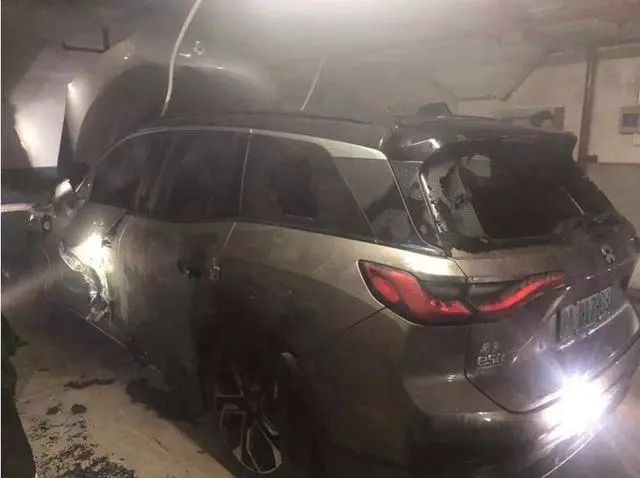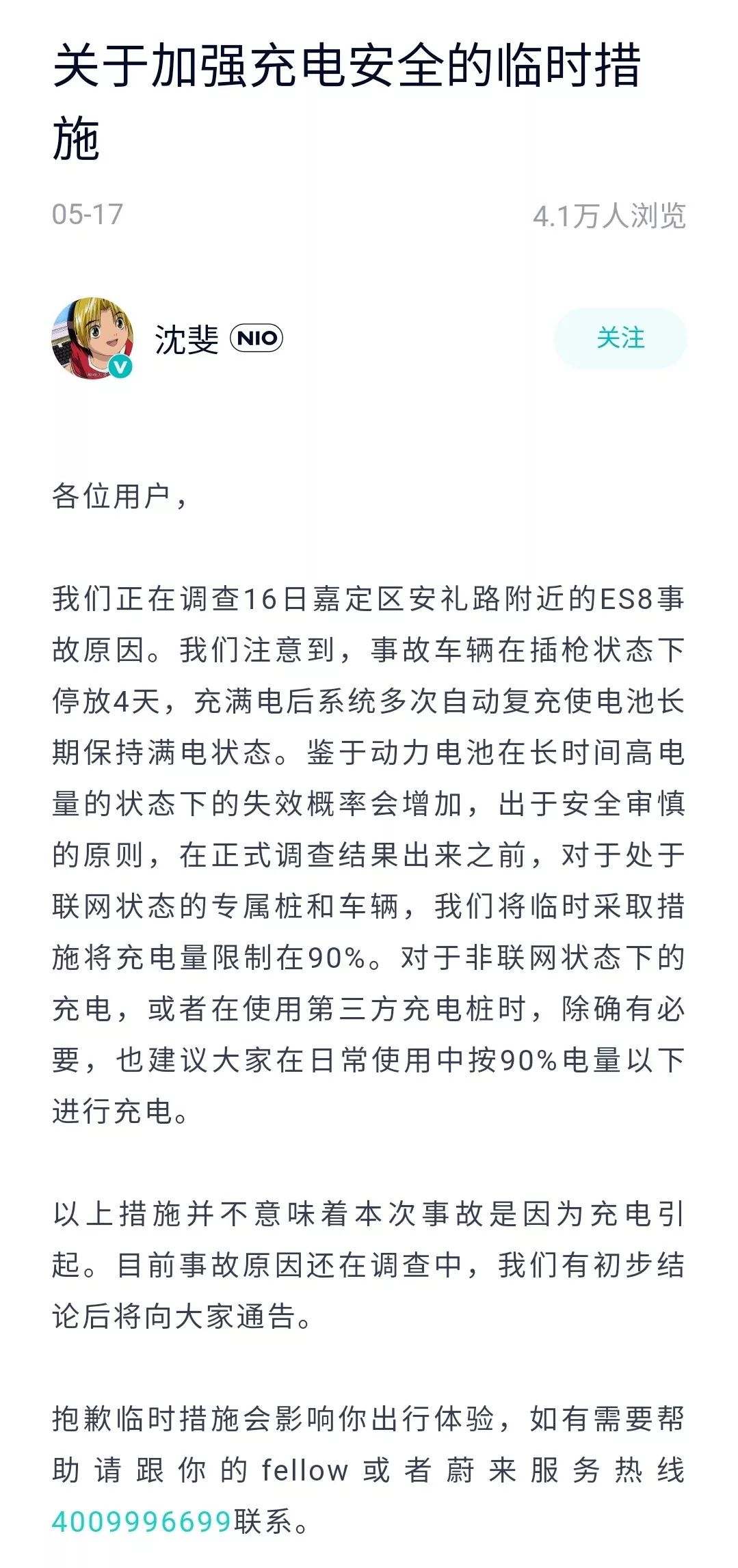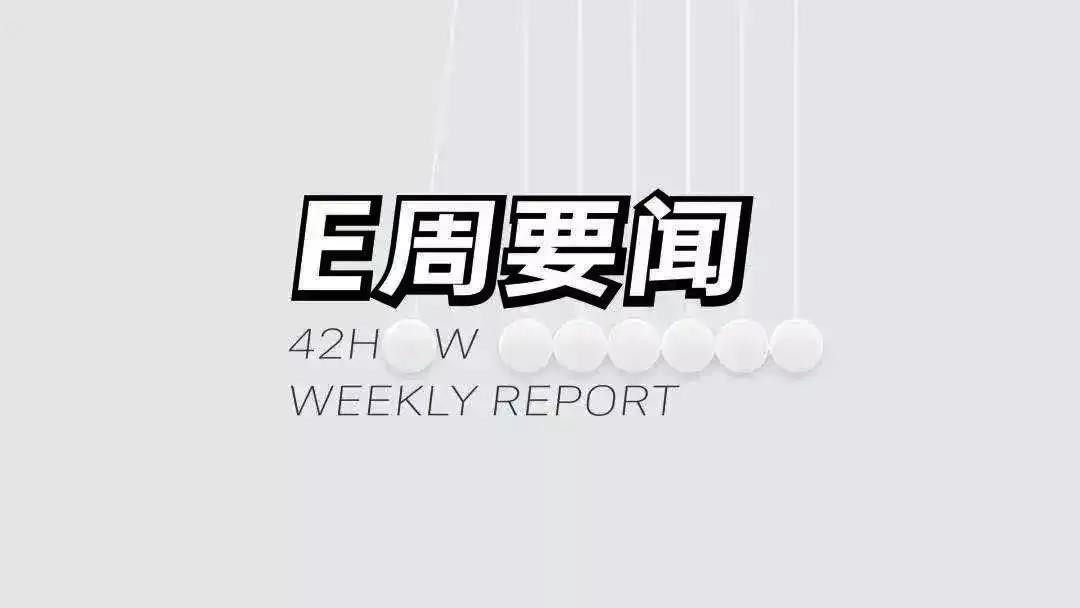Weekly Index

Weekly News
Hong Kong Model S catches on fire

On May 12th, a Tesla Model S electric vehicle caught on fire in the parking lot of New City Plaza in Hong Kong. This is the first such incident in Hong Kong. The owner said the car had just finished charging and parked in the lot. Not long after, the Tesla started smoking and caught fire. It is reported that the car experienced three explosions during the burning process, and the front of the car was severely damaged by the flames. It took local firefighters 45 minutes to put out the fire. No one was injured in the accident, and the cause of the fire is under investigation.
Comment: There have already been three incidents of Tesla Model S catching on fire within a month. Although none of these incidents resulted in injury, many consumers’ trust in Tesla has already begun to decline. Additionally, Tesla has not yet released the investigation results of the Model S catching on fire in a Shanghai underground garage on April 21st, which seems too slow. We hope that Tesla can give consumers a final explanation as soon as possible.
NIO ES8 smoking in the garage
On May 16th, a NIO ES8 caught on fire in a garage near Anli Road in Jiading District, Shanghai. Firefighters rushed to the scene and put out the smoke in time, and no personal or other property losses occurred.

Just one day after the incident, on the evening of May 17th, NIO’s vice president of automotive energy, Shen Fei, represented NIO in releasing a temporary measure to strengthen charging safety on the NIO app.

Judging from the content of this article, this smoking incident may be related to the long-time overcharging of the vehicle. In addition, Shen Fei also suggested that users charge their vehicles up to no more than 90% of the battery capacity in daily use.> Quick Comment: First, Tesla burned, then NIO burned, and now Tesla burned again… This is the second battery spontaneous combustion and smoke incident that has occurred within a month for NIO. Although NIO’s official response to both incidents was fast and positive, the reply content once again exposed a huge loophole in NIO’s battery safety. While NIO can avoid such problems by upgrading software in the future, it is still recommended that NIO conduct a comprehensive review of its battery safety system to avoid “closing the barn door after the horse has bolted” situation.
XPeng Launches Ride-hailing Service

On May 13th, the ride-hailing service platform “Yong Peng Chu Xing” of XPeng Motors, a new Chinese car manufacturer, was launched. Yong Peng has obtained the Guangzhou ride-hailing operation license and will be put into operation soon. The ride-hailing service of XPeng will adopt the same B2C operation model as Cao Cao Travel and Shouqi YueChe, and will be launched first in Guangzhou. The first batch of vehicles to be put into operation will be the XPeng G3, the first mass-produced vehicle of Xpeng Motors.
Quick Comment: XPeng Motors has officially entered the field of ride-hailing. The benefits are that it can solve the urgent problem of sales of the XPeng G3, as XPeng Motors’ goal this year is to deliver 10,000 G3 cars by the end of July and 40,000 cars throughout the year. It is indeed not realistic to rely solely on C-end sales. Secondly, with a large number of XPeng G3s on the road, a large amount of data can be collected for the XPilot 3.0 system, and the algorithm can be continuously optimized and improved, allowing for rapid iteration. However, the downsides are also apparent: a large number of XPeng G3s out on the road will not be conducive to the upward development of XPeng’s brand, and it will make XPeng G3 owners feel embarrassed.
Nissan Joins the Automatic Driving Camera Camp
On May 16th, Nissan held a communication meeting on automatic driving at its headquarters in Japan, announcing that radar and camera sensors would be used in future automatic driving technology instead of LiDAR. Nissan plans to commercialize automatic driving cars on urban roads by 2020, but for a long time, Nissan has not made any layout or investment in the field of LiDAR.
Tetsuya Iijima, General Manager of Nissan’s Advanced Autonomous Drive Development Department, commented on LiDAR as follows: Currently, LiDAR lacks performance that exceeds the latest performance of radar and camera sensors. It would be great if LiDAR could achieve the level of application in our (automobile) system. However, the fact is that its cost and performance do not match.## Highlights: Nissan questions the laser radar; Tesla V3 Supercharger to be introduced to China by the end of the year; BYD/Daimler to increase investment in DENZA New Energy separately by ¥150 million
Tesla V3 Supercharger to be introduced to China by the end of the year
On May 17th, Tesla announced that it is expected to introduce the V3 Supercharger to the Chinese market by the end of this year, becoming the second country after the US to introduce this product.
The V3 Supercharger supports a peak charging power of up to 250 kW, and with actual testing data from Tesla users in the US, the Model 3 Long Range version takes only about 25 minutes to charge from 10% to 80%.
Comment: With the official introduction of Model 3 to the Chinese market, the utilization rate of some regions’ V2 Superchargers has been quite high, and even queues often occur. It is believed that Tesla’s total ownership will increase significantly after its Shanghai plant officially starts production. Fortunately, Tesla’s V3 Superchargers will be introduced to China at the end of the year. This will effectively shorten the charging time of each vehicle, reduce queues, and improve the overall user experience.
BYD/Daimler to increase investment in DENZA New Energy separately by ¥150 million
On May 18th, BYD announced that it will increase DENZA New Energy’s capital by RMB 150 million, and Daimler Greater China Investment Co will also increase its investment by RMB 150 million. Both parties will hold a 50:50 share of the company.
In fact, BYD and Daimler have already increased their capital to DENZA earlier this year, investing RMB 200 million each. As a result, the registered capital of the company has increased from RMB 4.16 billion to RMB 4.56 billion. If the current investment is completed, the registered capital will increase to RMB 4.86 billion.
Nissan questions the laser radar
Comment: Nissan’s traditional conservative approach has suddenly announced a switch to a camera-based approach, which is completely feasible for an autonomous driving system based on camera-only and anti-laser radar. This is evident from their criticism that laser radar’s performance is inferior to that of cameras and radars and its cost is not commercially viable. This no different from what Elon Musk has said, that laser radar is redundant and expensive, and is not necessary.>Quick Comment: Since its establishment in 2012, DENZA has been committed to creating high-end new energy vehicles. It is equipped with BYD’s fundamental three-electric technology and Daimler is responsible for the exterior design as well as the chassis and body. However, DENZA seems to have no outstanding advantages other than the high-end positioning. There are neither luxurious configurations nor auxiliary driving systems equipped, so the sales of DENZA have been mediocre. BYD and Daimler are still continuously investing in DENZA, and DENZA plans to launch a brand-new SUV model in June 2019. Meanwhile, DENZA will be included in the Mercedes-Benz sales system. However, the competition in the field of new car makers is fierce. Can DENZA still regain a place?
A Weekly Survey
For the new car makers, NIO and Li Auto are currently the most popular. Both companies adopt the “top-down” strategy, and their product pricing is also directly breaking through the difficult 300,000 yuan threshold for traditional domestic brands. However, high prices do not necessarily mean high brand power. Therefore, we also surveyed the images of NIO and Li Auto in everyone’s minds.
For specific voting results, please scan the QR code below:

45% of users believe that NIO belongs to a luxury brand (4%, 20%, 21% belong to super-first-tier, first-tier, and second-tier luxury brands respectively). Only 32% of users believe that Li Auto belongs to luxury brands (2%, 3%, and 27% belong to super-first-tier, first-tier, and second-tier luxury brands respectively).
It can be seen that NIO has indeed opened up a gap in its brand-building ability compared to Li Auto. Although compared with Li Auto, NIO has attached great importance to the construction of the brand since its birth in 2014, however, for a new car maker that has only been established in a short period of five years, the strength of its brand can already compete with some luxury brands. At this moment, I just want to quote the words of a well-known car critic to describe it: “It’s not easy, it’s really not easy.”


This article is a translation by ChatGPT of a Chinese report from 42HOW. If you have any questions about it, please email bd@42how.com.

 *
*